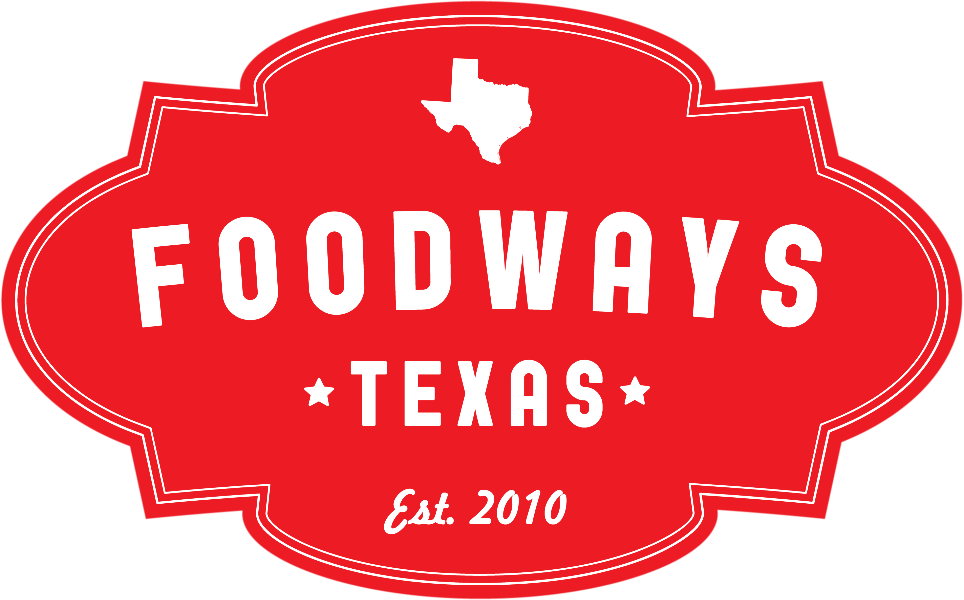Interviewers: Lisa Powell and Andrew Busch
Location: Cooper’s Old Time Pit Bar-B-Que – Llano, TX
This interview was originally produced through a collaboration of the American Studies Department at the University of Texas at Austin, The Central Texas Barbecue Association, and The Southern Foodways Alliance. Fieldwork coordinator: Dr. Elizabeth Engelhardt
This interview was originally produced through a collaborative effort of the American Studies Department at the University of Texas at Austin, The Central Texas Barbecue Association, and The Southern Foodways Alliance.
Fieldwork coordinator: Dr. Elizabeth Engelhardt; Project consultant: Amy Evans
It is shared with Foodways Texas as part of a collaboration with the Southern Foodways Alliance to document food stories in Texas.
Terry Wootan worked at Cooper’s when he was in high school. After spending some years away from barbecue while focusing on his real estate business, he took over Cooper’s in 1986.
In his first years operating the business, Wootan did all the cooking and his wife operated the cash register. They have since expanded to thirty-eight full-time employees, who serve the thousands of hungry customers who descend on Cooper’s each day. While Cooper’s is a favorite of both Texas Hill Country locals and road trippers, dedicated eaters also fly into the tiny Llano airport for lunch by the hundreds each month.
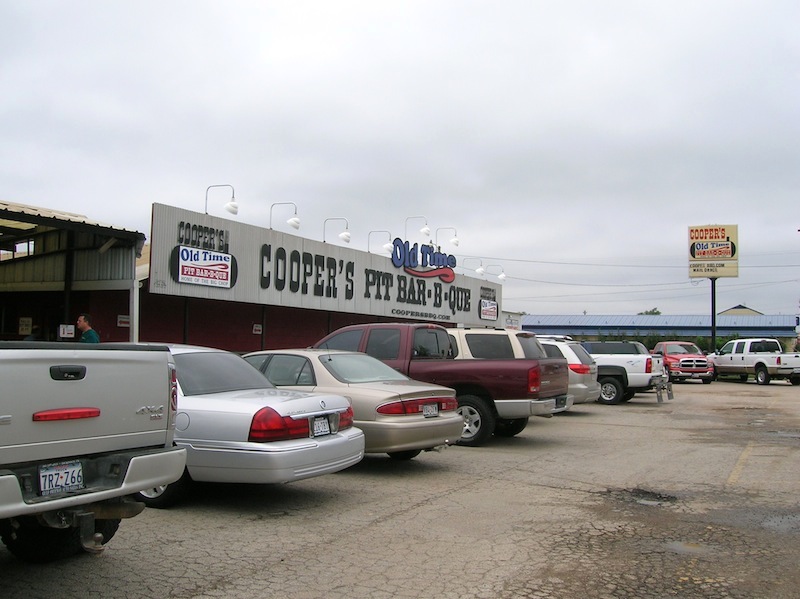
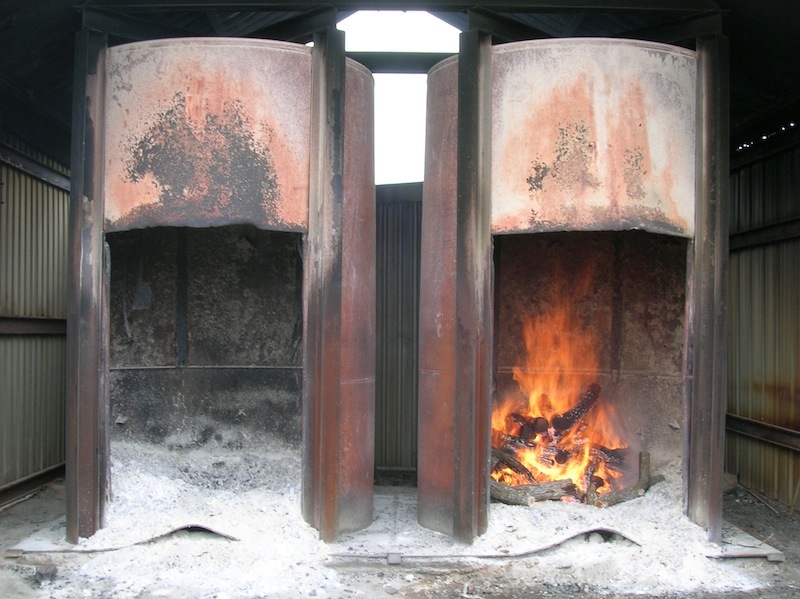


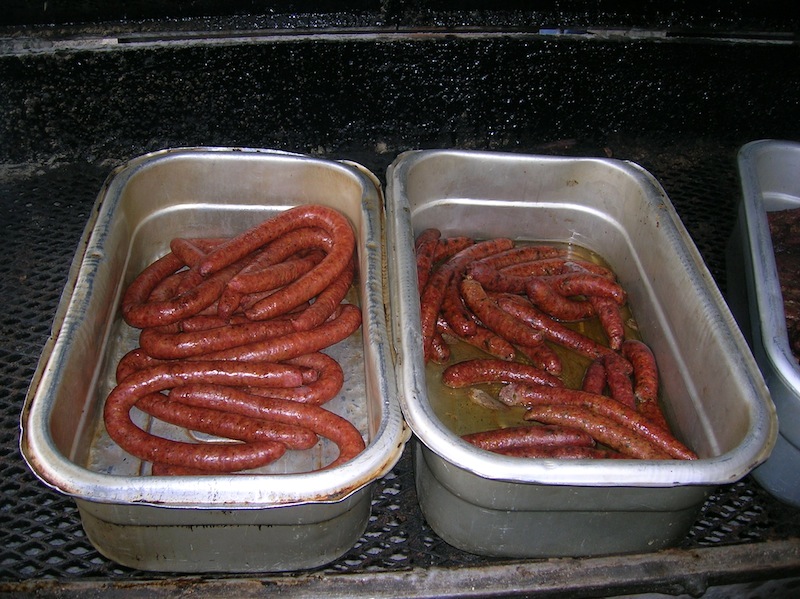
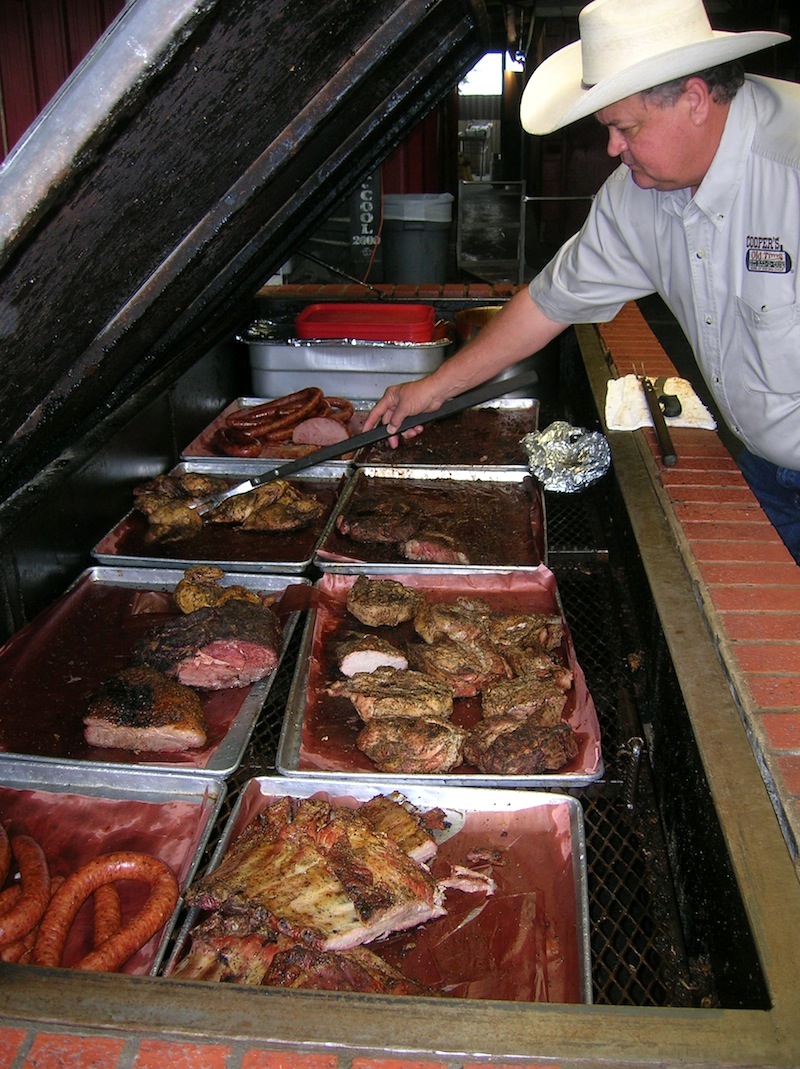
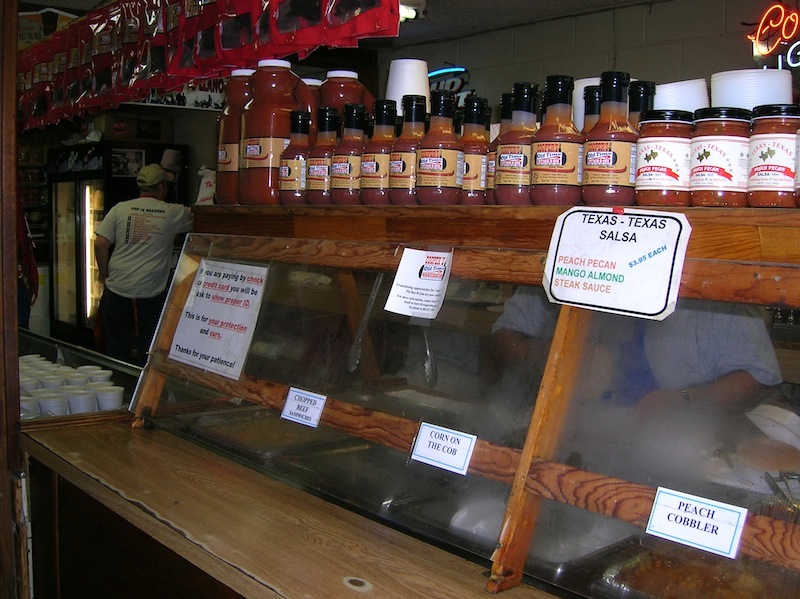
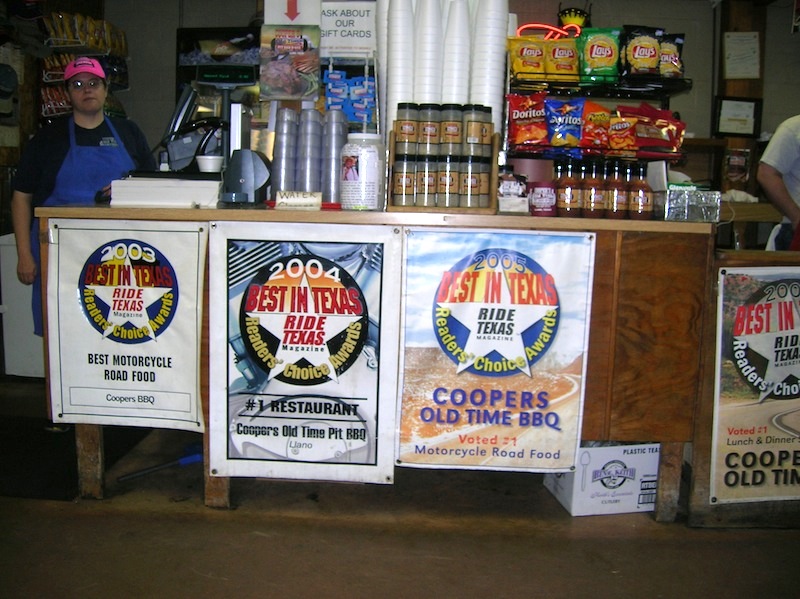
NOTE: What follows is a portion of the original interview that has been edited for length. To download the entire transcript in PDF form, please click here.
EDITED TRANSCRIPT
Produced in association with the American Studies Department at The University of Texas at Austin and the Central Texas Barbecue Association.
Subject: Terry Wootan
Date: September 11, 2007
Location: Cooper’s Old Time Pit Bar-B-Que – Llano, TX
Fieldwork Director: Dr. Elizabeth Engelhardt
Fieldwork Team: Lisa Powell and Andrew Busch
—
Lisa Powell: All right, so just to get started, would you mind telling us how you got started in the barbecue business?
Terry Wootan: Back in 1986, I was a real estate broker and things kind of got slow in Llano. So, I had the opportunity to lease Cooper’s Old Time Pit Bar-B-Que in Llano. And so I did, and I run a real estate office on the same lot as Cooper’s. And I purchased Cooper’s in 1992.
—
Tommy Cooper started the Cooper’s in Llano in the mid-fifties. And he ran it, family owned, family operated until 1979, and he was killed in a car accident. And his family sold out to a couple of local businessmen, and then they leased it to one of his employees, and then in 1986 I had the opportunity to lease it. And then I took it over in 1986.
—
It’s been on the same lot, the original barbecue pit that he built had a dirt floor, and a dining room, one little concrete building. I think he had two pits. And on the tables they had one knife that was chained to the tables. You ate on butcher paper just the way we serve it now. And with your—there was no sides. You’d buy the meat, pay for it by the pound, and you could get chips or pickles, and then you had a drink machine in the back that you could buy soda water.
—
In about 1974, Tommy built the facility that operate out of right now, which is about half of the size that it is now. We did a large remodel and expansion in about ’92, right after I bought it. But it was a pretty neat operation, the way he—the way he did it before. The dirt floors, had bread on the tables, which we still do that right now, and it was a, quite a rustic little operation. But now it’s still rustic, but we thrive on the cleanliness. We’ve got concrete floors, cinder blocks, and we’ve got about eight pits now. And we’ve—we will cook most every weekend, Friday, Saturday, and Sunday, at least two cooks per pit. So, we do, we do have a really good business, high volume.
—
I notice that your pits are right out for everybody to see. I really like that. Is there, is there a reason why you do that? Do you just kind of—is that a tradition?
Yes, that’s the best advertisement we can have. That smoke floating across that highway. It’s kind of hard to pass by the barbecue pit here, without smelling the aroma and seeing the long lines. And so it, it’s built-in, free advertisement really.
And so could you tell us just a little bit about the construction of your pits? Kind of what the setup of them is?
We have—our pits are of metal construction. We have two that has the brick around it, our holding pit, our serving pit. But the rest of the pits are just solid steel construction. We do not have a fire box like a lot of the barbecue pits do because we cook with direct heat. Just like you’re grilling your steak in your backyard. We’ve got large burn barrels, which we’ll put a pallet of wood, which is about half a cord, burn it down to coals. Then we have long shovels that we put the coals directly under the meat, and cook—we cook pretty fast, pretty high heat. People ask me what temperature we cook at, and I always kind of go by the three second rule. You hold your hand over the grill, and after three seconds, you better move it. That’s a perfect temperature that we cook at.
—
So, you mentioned that you—can I say that you cook quickly? What are the cooking times like for the different kinds of meat?
We believe that you need to sear the meat to keep the juices in. You hear these guys cooking briskets eighteen hours, but we sear our briskets on both sides really, really good. And have to cook them about two-and-a-half to three hours. And then we will wrap them in tin foil and finish them the last hour. So, brisket is anywhere from three-and-a-half to five hours. Most the time about four-and-a-half hours. Pork chops, we will—we could cook those in probably thirty to forty minutes. Ribs is the same—the same distance—I mean, same time. The cabrito will be about three, three-and-a-half hours. Chicken is about an hour-and-a-half. And that’s pretty much the basics, you know. We slow it down a little after we get it good and seared. But we cook really fast, really hot. It keeps the flavor in. You don’t have a—we do—we do not have a smoke ring on our product. If you go to a barbecue cook-off, they say you’ve got to have a big smoke ring and all that stuff. But in our opinion, our brisket doesn’t have a smoke ring, and I think it’s as flavorful as any—any brisket around. You don’t get the after-effects of having a smoke ring, the belching, that you get the taste of barbecue for another two days. With the direct coals, we do not have that problem.
—
I’m wondering how you came up with the idea to serve cabrito. And actually for a lot of the people from around here—if you know any of the history of cabrito, or just exactly what cabrito is. It’s a very unique thing, I think, to this area.
Mr. Cooper did sell cabrito before I took it over. And the cabrito is a tradition from Texas and Mexico. It’s a younger goat. We use—and the real term for cabrito is, kind of, you know, I’ve heard definitions from several places. It’s all milk fed. Well, ours per se is not milk fed, but it’s all young goats that’s been on feed. You know, a temporary time, not very long because they will get too large, and we don’t like serving the large—large goats. But, you know, per se cabrito is—we may be, kind of, not really serving cabrito, but everybody calls it cabrito because cabrito is supposed to be weaned right off the mama and served. And we do not serve that, but it’s a very good product.
—
And so, you were talking a little bit about what this sector of the U.S. likes with its sauce, are there any sort of other characteristics of barbecue in this area that you see as defining it?
Well, right here in Llano, everybody—the biggest part of everybody, that when you have a barbecue, not just a restaurant, it’s cooked with direct coals. And that’s kind of our cup of tea, for the Hill Country or Llano to cook with direct coals, kind of the cowboy way. That’s one reason we call it the Old Time Pit Bar-B-Que. The cowboys started this tradition out on the ranges. They’d build a fire, and they’d either get a stick and cook it that way or then when they—in the following years, they’d have some kind of grill that they would put it over. And so, that’s the reason we call it the Old Time Pit Bar-B-Que because we do cook the cowboy way.
And so, is there anyone cooking with you now who was cooking before you acquired the restaurant, anyone who’s been involved for a long time?
I’ve had Cooper’s since ’86. So, it’s twenty-one years. None of my employees right now worked with me when I started. I cooked it, did all the cooking the first year and a half, two years myself. My wife ran the cash register. My two high school—well, one of them was in high school, like a freshman, the other was a sixth grader. We pretty much run it as a family, and I had a couple of part-time employees. And then about ‘87 I brought on about one or two full-time employees. And now we’ve got like thirty-eight. But I basically learned how to cook it. I worked at Cooper’s some when I was in high school. And I burned a lot of meat up trying to figure out how to do it. But we’ve perfected it, to our opinion—that we try to serve the same product every day. And it’s pretty hard to train somebody to do it your way. But I’ve got about four really good cooks, that have learned, you know, passed my test. And we have a hard time, a lot of cooks have come and gone, but I’ve got four boys that have been with me. The oldest—the longest is about nine—nine or ten years. And so, we’ve got about four really good cooks right now.
And so, whenever you did work here in high school what was your specific job at Cooper’s?
When I was in high school, we kind of did it all. It was kind of, you know, in the mornings, we add the seasoning, cook the meat, and then when the customers started coming in, we’d have to wait on the customers. But Tommy Cooper, he did a lot of custom cooking. People would bring chickens or steaks, and he’d charge them extra—fifty cents a pound or seventy-five cents a pound. So, we had to label each meat to keep it so—they brought their chicken, they wanted their chicken back. And we used the old ice-cream spoons and we’d write their names on the thick part of the ice-cream spoons, and sharpen it, and stick that piece—that spoon in that piece of meat. We’d have like forty to fifty different customers come in every Saturday and Sunday, mostly on Sunday and we did a lot of custom cooking, which we don’t do anymore. But that was—that was fun. But when you waited on the customers, you’d see Mrs. Smith come in for her chicken, you’d know, whoever was available would go get her chicken and load it up in a little pan. We’d take it inside and wrap it in butcher paper. We did not wrap it in tin foil back then, just butcher paper. It would drip all over the sacks. But people liked it or they’d bring their own pans, then we’d cover it with foil. But there was no foil used back then. The customers come in now we—we wrap everything in foil or put it in foil pans. Kind of basically the same, but we’ve kind of went up a step.
—
So, in the course of talking about the franchises, you did mention your sides. So, could you talk just a little bit more about what sides you offer here at Cooper’s?
We offer coleslaw, potato salad, three peach cobbler, apple cobbler, blackberry cobbler with Blue Bell ice cream, chips, pickles. We want you to buy your meat and pay for it. Out in the dining room we have a pot of beans. You can eat all you want. We have full loaves of bread. You can eat all the bread you want and onions. That’s pretty much it. It’s pretty simple.
—
So, could you, because we’ve kind of alluded to it a little bit, but could you go ahead and just walk us through what the experience of coming to Cooper’s to eat is like for the customer?
The experience at Cooper’s is—is kind of tough for some people. Our lines get kind of long, up to an hour-and-a-half wait. But we form a line outside, and everybody goes through the line to the serving pit, in which your meat is served right directly off the pit. And we have all our products, which is the pork ribs, the pork chops, the beef ribs, sirloin, prime rib. I forgot we do serve ham, the chicken, two different types of sausage, the brisket, and if I didn’t mention beef ribs, that’s pretty much everything, laying out on pizza trays or bacon pans with—we put butcher paper over the top of it, and everything is presented. We do not have a menu, never had one, not going to have one. You pick it right straight off the pit. The products with the bones, like the pork chops, you’ve got to buy whole pork chops. We’ll cut you one inch of brisket or sell you ten briskets. And it’s—everything is stacked on a tray. And then you take the tray inside yourself to our buffet line, I guess that’s what you call it, hand it to one of the meat cutters. They, the wrap it for your To Go, if you want it To Go. Or if you want to eat it there, they will wrap it in butcher paper. And then you go down the line and get your sides, which we do have corn. I forgot about corn. I keep forgetting about everything. But just follow down the line, kind of, like cafeteria-style. You get to the end of the cash register, you pay out at the end, uh, and then we—we give you a piece of butcher paper. And you go to your table and everything is, uh—we serve on picnic tables. And you sit at the picnic tables, you set your meat down, then you go get your drinks, and things, and onions. You go back to the table and you’re maybe sitting across the table from somebody from Europe or New York City or, you know, maybe a farmer from here. It’s just, kind of, family style, which makes it unique. People really enjoy the talking and meeting different people. It’s not like going to the restaurant and you’ve got your own individual table and you don’t get to mingle and meet everybody and hear all the stories. It’s pretty—pretty fun experience.
—
Any famous customers you can think of?
Oh, we’ve got a lot of famous customers probably the most famous was LBJ [United States President Lyndon Baines Johnson]. [First Lady] Lady Bird [Johnson], we’ve got pictures of her eating here, I think two years ago, about 2005, the last time I saw her in the restaurant. President Bush has eaten here once. We catered for him when he was governor. And then when he was elected president, they called us the week that the re-count was finally finalized and said, “We’ve got to have you come to Crawford.” So, my son called me and said, “Daddy, President Bush wants us to come cater. What do you think?” And I said, “Well, yeah, I think we can work it in our schedule.” So, we loaded up, and it was a really unique experience. You know, everybody that went—we had to get social security, driver license, they did a background check on us. I took a barbecue pit and got there about six-thirty in the morning, and forty-five minutes later after—the dogs went crazy smelling all that stuff. They were looking for bombs, I guess. We unloaded and then I set my barbecue pit up, started my fire, and I had my own Secret Service guy that stayed right there with me and watched every move I made because I had knives, and forks, and all that stuff. But there was a lot of firepower there, and it was something for an old country boy like me to—they had probably three hundred policemen, you know, around the estate. And the Air Force was there and was flying over. I got to sit in on nineteen—I believe it was nineteen—Republican governors that helped President Bush get elected. And they were all there. I just kind of mingled with them. And they had the bull session after the meal. They had a press conference there first and then he said, “Boys, this is all for y’all. We’re fixing to eat Cooper’s barbecue from Llano, Texas.” And that was, you know, national. So, he made all the reporters leave and they had a big old feast. It was a fun deal.
